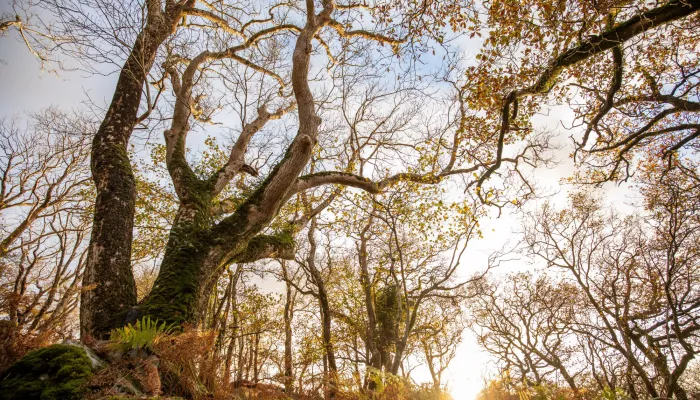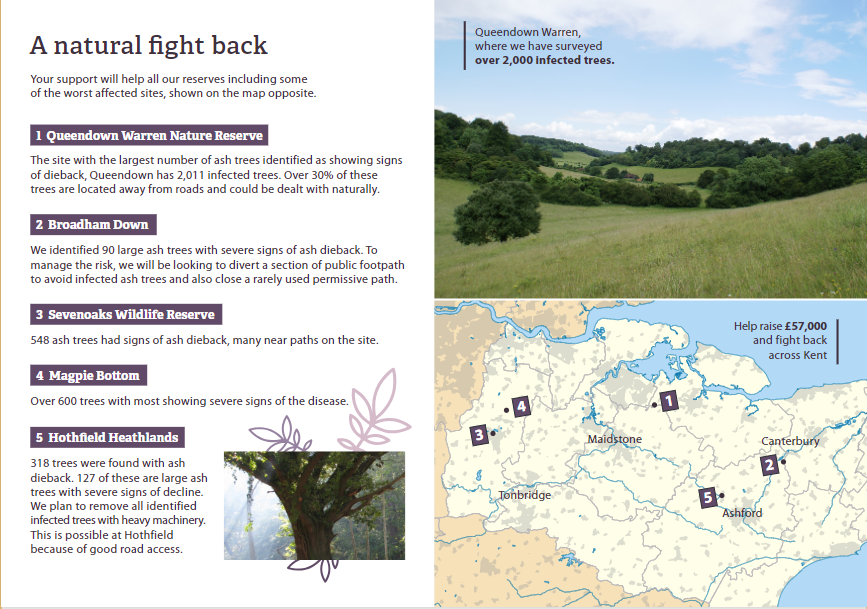Ash dieback is changing our woodlands and is expected to affect over 80% of the UK’s ash trees, at an estimated cost to the economy of £15billion. Since first being recorded in the U.K in 2012, it has spread rapidly – and a recent survey of our reserves identified 17,000 trees with ash dieback. This is just the tip of the iceberg with the total figure likely to be ten times that.
But all is not lost!
We have a plan to allow for nature to be the solution. This can happen by allowing safe areas to naturally decay, only dealing with trees where they are a danger to us. This could help transform our woodlands for the better, increasing species richness in the woodlands over time.

Our plan of action
Benefits to our approach
Clear felling areas of woodland is damaging and means healthy and resistant trees are also destroyed. A more sensible approach is needed, and the benefits of allowing areas to naturally decay include:
Infected trees that are in safe locations will be allowed to naturally decay. This will:
- Provide a huge amount of deadwood habitat that will become home to a vast array of wildlife such as fungi and insects. Similar to the Great Storm of 1987, these changed habitats will improve reserve biodiversity as a result.
- Increase light levels resulting from the ash trees dying. This will stimulate new growth and regeneration of other plants.
- Mean that resilient ash trees will survive and their seeds will allow for restocking, meaning that ash can remain a part of our countryside in the future.
Ash Dieback on our reserves
Ash Dieback is affecting virtually every wooded area in the County. Extensive surveying of our reserves recorded 17,000 trees with ash dieback, with the likely total on our reserves being near to 200,000.
The below map highlights some of our affected reserves and plans to tackle ash dieback.


